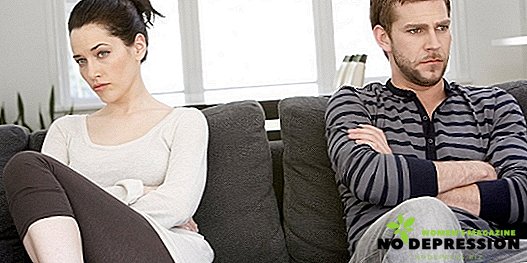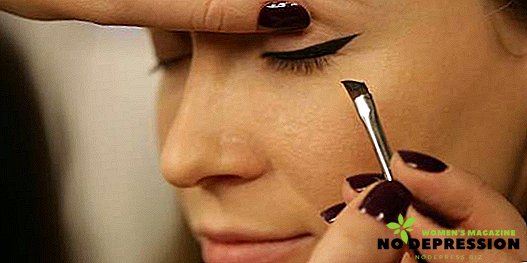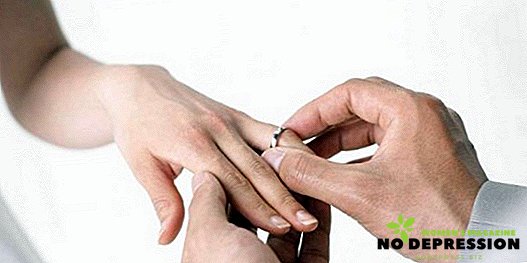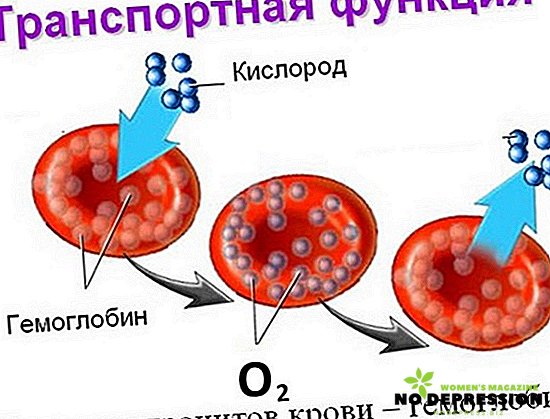For some reason, many still believe that the cause of most diseases of the spine, including osteochondrosis, is intense physical work, in which a person is forced to “roll” large weights.
Of course, this factor may be one of the causes of this disease - one, but not the only one. Strangely enough, at first glance, the opposite situation leads to it much more often: the chronic lack of movement that our spine needs so much, especially its cervicothoracic part, as the most flexible and mobile.

It is not by chance that one of the varieties of this pathology - cervical osteochondrosis - has become widespread right now, in the era of "universal mechanization, automation and computerization" of almost all types of human activity. If earlier his symptoms were well known mostly to old people, now they are known even to schoolchildren.
Illness of civilized intellectuals
Frequent stressful situations, hypodynamia, which has assumed a truly catastrophic size, the long-term preservation of a static posture while sitting at a written or computer table - all this together serves as a very "fruitful ground" on which the cervical chondrosis can flourish in full color. Therefore, it is considered to be an occupational disease of knowledge workers forced to spend long hours bending over paper or a keyboard.
For many people, a crunch in the spine with a sharp turn of the head, a feeling of aches, tension, tightness in the muscles of the shoulders and neck, when a handful of pepper would be poured under the skin, frequent headaches and dizziness became so commonplace that they almost came to terms with it. There is an opinion that the "cervical" type of this pathology is a common thing for most of our intellectual contemporaries, with which it is quite possible to get along.
But is it really so unserious and harmless? Alas, medicine, and sometimes life itself, convinces us of the opposite ... Problems with the cervical spine can have very serious consequences. After all, this is the main support of the head, on the state of which they all instantly respond with a loud echo.
Core of life
 It is not for nothing that the spine is called the "basis of foundations" of the human skeleton: the health of the whole organism depends on its condition. Therefore, violations in this area of the body can lead to very serious consequences.
It is not for nothing that the spine is called the "basis of foundations" of the human skeleton: the health of the whole organism depends on its condition. Therefore, violations in this area of the body can lead to very serious consequences.
Osteochondrosis is not appendicitis, its seizures never appear out of the blue for no reason at all. Usually, it all starts with an elementary muscle spasm that occurs as a result of overstressed muscles, which are forced for a long time to keep the back and head in the same position.
Those near the spine are attached to the vertebrae; shrinking, they reduce the intervertebral gap. This leads to compression of both the vertebral bodies and the cartilaginous "layers" between them, ensuring the normal mobility of the spinal column.
In addition, against the background of spasmodic phenomena, there is an excessive contraction of the blood vessels that feed the muscles, also causing a disruption of the blood supply in the above-mentioned components of the "vital rod".
If this situation is repeated often enough, it can cause degenerative processes in the tissues of this important organ, which lead to the development of osteochondrosis. And that, in turn, can easily bring a person not only to the sick-list, but also to the hospital bed.
 Hypertension that is now widespread and very “rejuvenated” may well be - and often is - one of its side effects. It is also possible the emergence of such serious ailments with far-reaching consequences, such as protrusion or vertebral hernia - yes, do not be surprised!
Hypertension that is now widespread and very “rejuvenated” may well be - and often is - one of its side effects. It is also possible the emergence of such serious ailments with far-reaching consequences, such as protrusion or vertebral hernia - yes, do not be surprised!
In the most severe cases, the disease can even cause partial paralysis of the limbs. Therefore, to dismiss the alarming signals of your body, signaling such problems, to put it mildly, is unwise.
Movement - the guarantee of health
Man, like all living things, is conceived by mother-nature (or the higher forces, even science is inclined to believe in existence) as a dynamic system, therefore all of its organs are designed for constant dynamic loads.
A sedentary lifestyle, which, unfortunately, leads most of us, is guilty of many of our ailments, including such as osteochondrosis. Therefore, the main remedy, as well as a means of preventing this disease, should be precisely the movement.
One of its varieties is gymnastics.
However, in no case should diagnoses be made, and even more so - prescribe yourself a treatment yourself, based on the recommendations of friends and acquaintances. Remember that any external symptom, including neck pain, can have many causes.
Before you start to exercise therapy for cervical osteochondrosis, it is necessary to consult with your doctor to determine the diagnosis, and then follow the recommendations of a specialist.
He can properly assign a set of exercises for cervical osteochondrosis. It may be that after the examination, he will advise you to perform some of the exercises with extreme caution, or to eliminate them completely. At the time of exacerbation of the disease, it is desirable to minimize physical stress on the spine.
Physical culture
Sometimes, as an explanation and justification of our own “hypodynamicity,” we refer to a chronic lack of time. But on closer examination, we have to agree that from our side this is nothing more than an excuse - however, it is very universal.
Exercises for fatigue and pain in the neck can be performed for 3-5 minutes every one and a half to two hours, not only at home but also at the workplace, and for this you do not even need to get up. Would you like to check?
Here is just one of the possible options for gymnastics, which can be done while sitting on a chair, repeating each exercise 4-5 times.
So, exercises for osteochondrosis of the cervical spine:
- Straighten your back, tilt your head left and right, trying to reach out to the shoulder.
- The back and head are kept straight, the chin is slightly raised. Turns of the head alternately in both directions with a return to the original position.
- Putting the palms of both hands on the forehead, press on them with the head for 5 seconds, while the hands must resist pressure.
- The same thing - clasping the palm of your hand at the back of your head.
- Repeat the exercise, tilting the head to the side, holding the hand first at the right, then at the left temple.
- Sit up straight, throw back the head, then slowly lower it, overcoming imaginary resistance, until the chin is pressed against the chest.
- Turns head down, right and left.
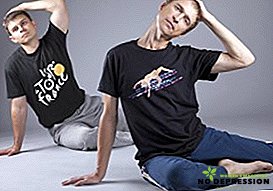
Important note: all movements are smooth, cautious. When rotating / tilting, be sure to support the head with your hands.
Such gymnastics helps not only with the cervical, but also with the cervicothoracic form of osteochondrosis. In the latter case, you can add another “sedentary” exercise in osteochondrosis of the cervico-thoracic spine: straighten your shoulders, trying not to move them, alternately bulging, then retracting the chest.
When pain hurts especially hard, another set of exercises will be more appropriate for those who suffer - sparing.
So, effective exercises to relieve pain in cervical osteochondrosis at home:
- sitting on a chair, straightening up, but not straining, we make light nods of his head, as if we agree with the interlocutor, saying to him: yes, yes;
- the same, but not agreeing: no, no, we are against it;
- we shake our head, wondering: oh, oh, oh, oh, how could this have happened ...
 These exercises are easy to perform, not only at home or at work, but even sitting behind the wheel of a car.
These exercises are easy to perform, not only at home or at work, but even sitting behind the wheel of a car.
If we are at home and can afford to lie down, it is even better: we lay down on a flat, fairly hard surface (sofa, couch); putting a small roller under the neck so that the head does not lie on the sofa, we begin to gently wiggle it from side to side.
We emphasize once again: the amplitude of movements should be minimal, and for greater efficiency they should be performed hourly, with the maximum relaxed muscles, for about a minute each.
Myself a masseuse
Very well relieves pain in cervical osteochondrosis self-neck massage. Let's try?
- Clasping with your fingers (you can alternately with one hand, with both hands at once) the back of the neck, make stroking movements from top to bottom to the side from the cervical vertebrae to the shoulder.
- Rubbing circular movements along the neck and shoulders, in which the hand does not slide over the skin, but only moves it. If there is tension and pain in the shoulder area, we pay special attention to these places.
- Kneading the muscles that go from the neck to the shoulders. As a rule, they are the ones who experience the greatest stress, keeping their head in an inclined position when a person is leaning over a computer keyboard.
- Having clasped the head on both sides with splayed brushes, we find behind the point at the base of the skull, located slightly away from the parotid tubercles, and gently press on them with the thumbs.
- Slapping fingertips over the muscles of the neck and shoulders to a feeling of slight vibration in the muscles.
- Then again we stroke, we pound a neck and a humeral belt, passing on joints of shoulders.
Such a 10-15-minute massage leads to the removal of muscle spasm and warming up the muscles, the muscles of the neck / shoulder girdle become warm, the pain disappears.

The patient is the first assistant doctor
Doctors constantly repeat the commonplace truth to us: any disease is easier to prevent than to cure; but the words of the famous fable that "how many times have they told the world ..., yes, everything is not in vain ..." will not lose its relevance. This is the way people are organized: few of them pay special attention to their health until it itself reminds of itself.
That is why we are much more likely to treat illnesses than to prevent them. Meanwhile, the list of diseases that modern medicine can cure completely and without consequences is not so long: well, except that measles, chickenpox, scarlet fever, ARVI, appendicitis, ... and even then only with timely measures taken.

In other cases, all that she can promise us is the maximum slowdown in the development of the disease and the reduction of its acute forms. Of course, if we agree to help ourselves. These words are valid, in particular, in relation to cervical osteochondrosis.
All of the above manipulations are suitable not only as an emergency aid at the time of the attacks, but also as preventive measures. The main condition is their systematic use. Then the pain of the cervicothoracic spine will not take you by surprise, sneaking up, "like sleeping in the night," at the most inappropriate moments.
Additional tips on cervical osteochondrosis can be obtained by viewing the following video.







